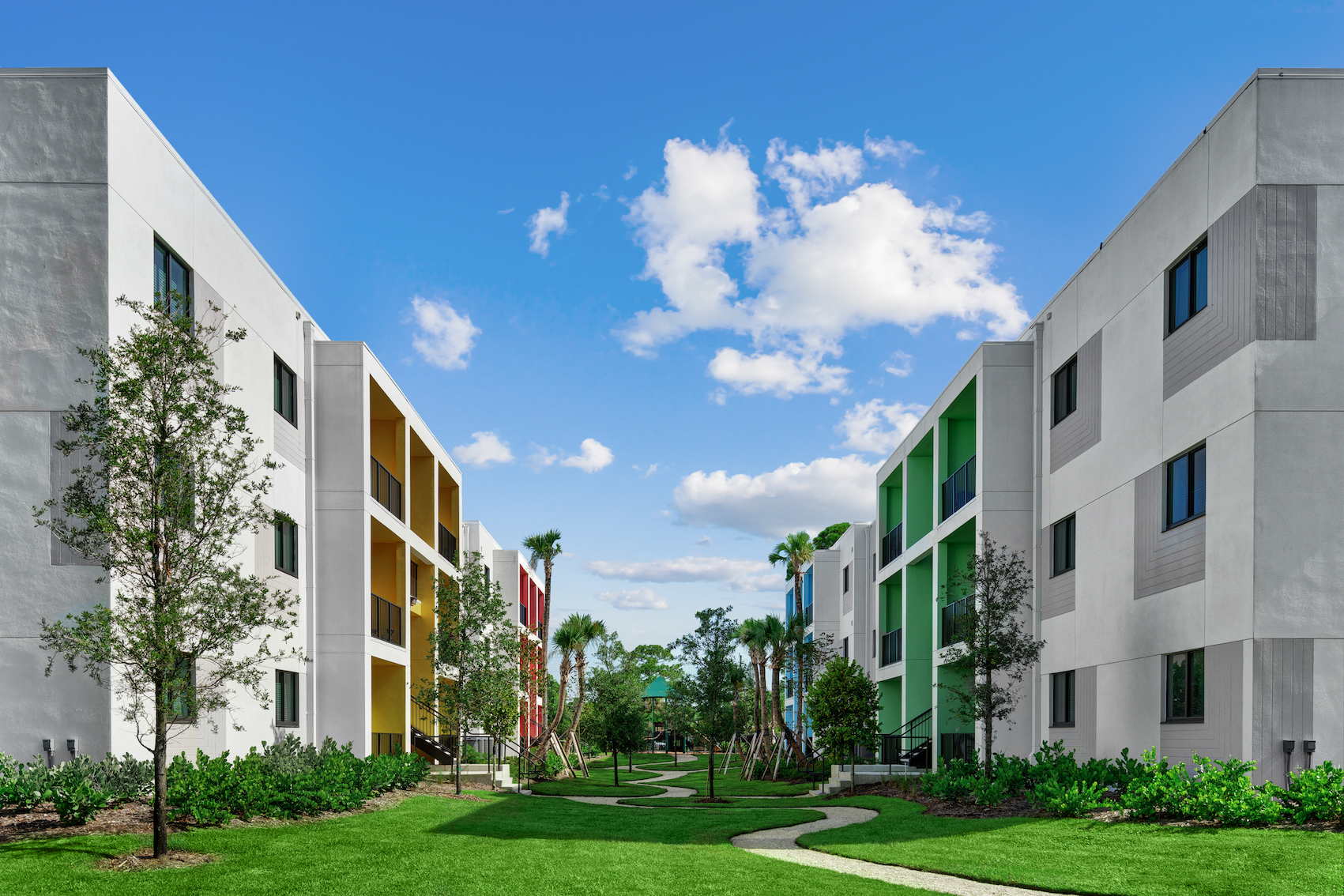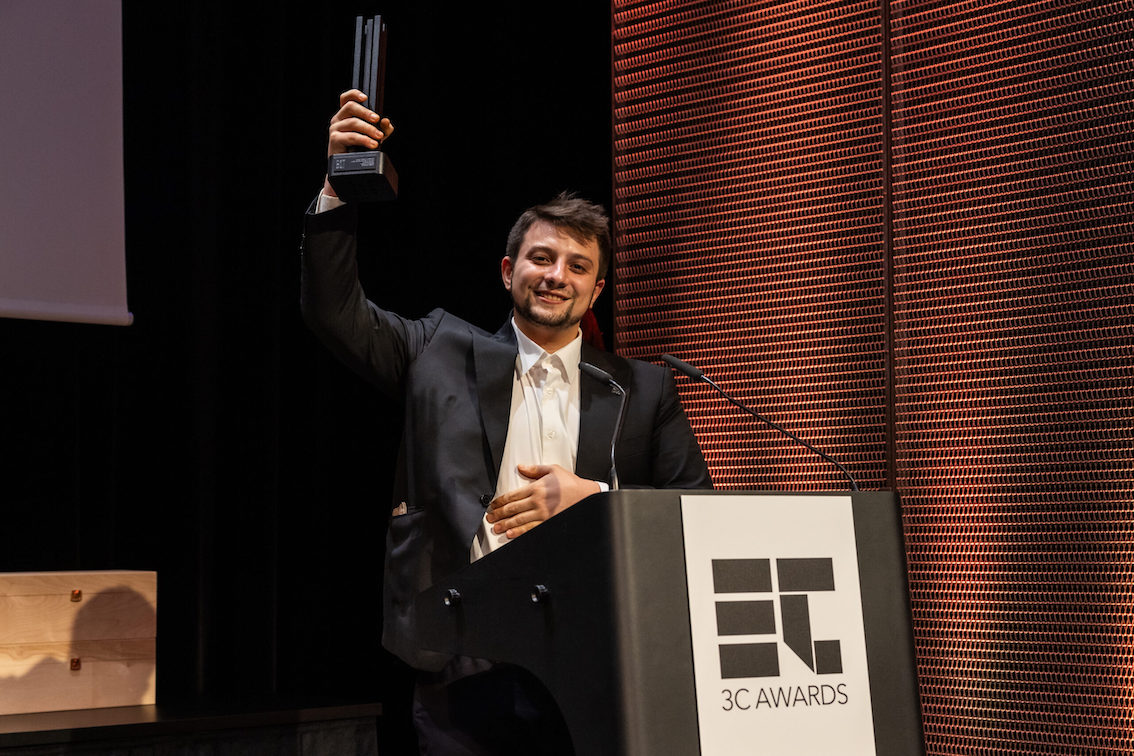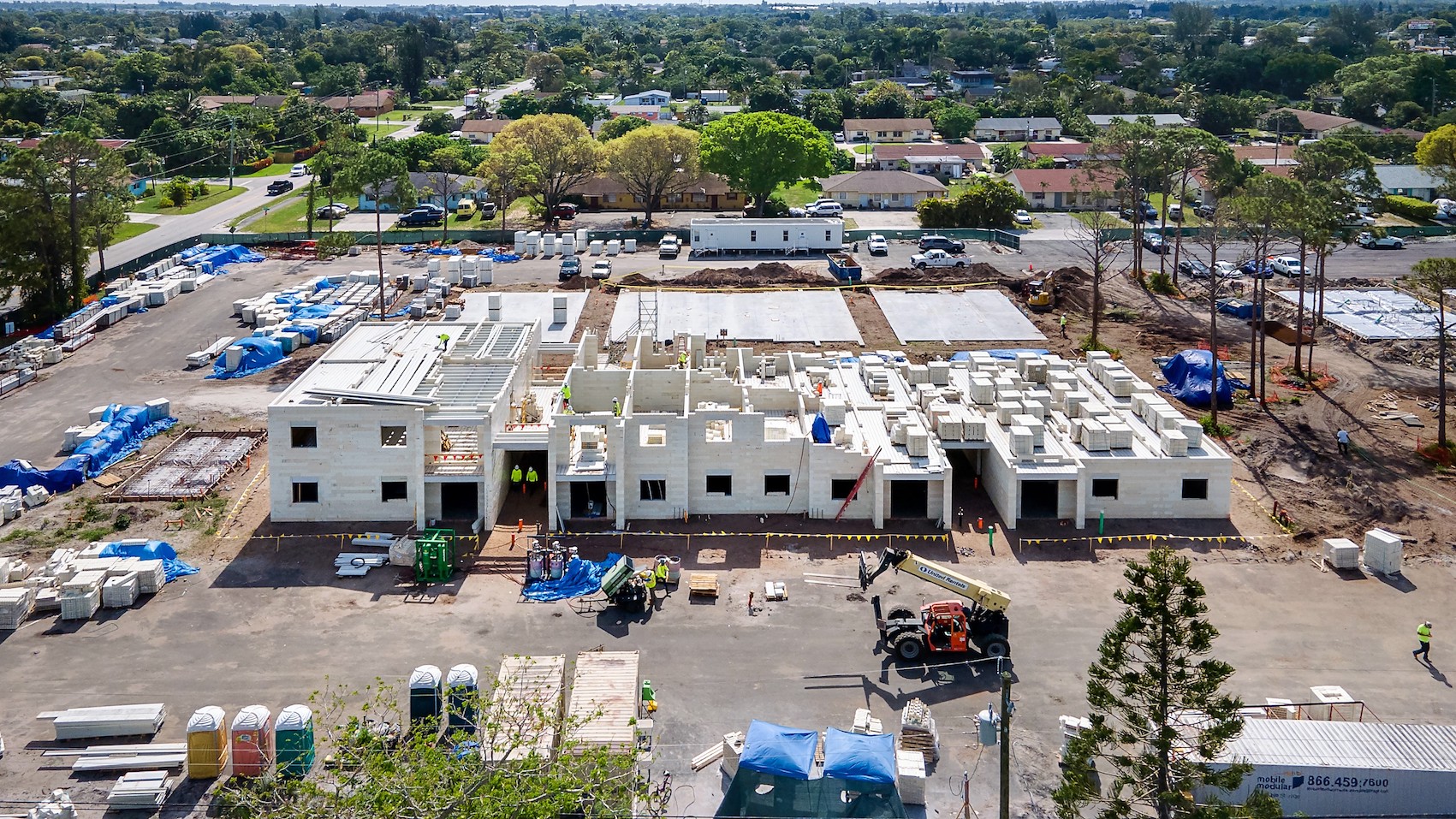
A US start-up selling a Lego-style, interlocking block system for residential construction has had a very good few months.
Last week, Renco USA cut the ribbon on its first development in the country, a four-building, 96-apartment complex in Palm Springs, Florida.
The previous month, the company raised $18m from investors in an initial funding round to help pay for its first factory on US soil.
And, at the beginning of October, the Renco system won Construction Product Design of the Year at the BLT Built Design Awards in Lucerne, Switzerland.

“Renco” is short for “renewable composite”.
The system uses blocks and components made from recycled glass fibres, recycled plastic, resin, and stone. The company says it owns numerous patents after 10 years of research and development.
It was co-founded by 50-year construction veteran Thomas Murphy, Jr, who established the Florida general contractor Coastal Construction in 1988.
Just a mallet and glue gun
Workers stack the blocks and components to a colour-coded plan, fixing them with a chemically bonding adhesive.
A spokesperson for the company told GCR that each of the four, 3-storey blocks in Palm Springs were built by 11 unskilled workers equipped only with a mallet and glue gun.

The average build time for each block was eight weeks.
The company said this saved around 20% of the time and cost involved in conventional, hurricane-zone concrete construction.
It also saved some 50% on project insurance owing to the simplified building process and shortened project duration.
“No heavy equipment was required,” the spokesperson said. “We used no exterior scaffolding, no cutting, burning, welding or grinding was necessary.”
Won’t blow away
The system has been tested in laboratories certified by the American National Standards Institute (ANSI) to meet standards set by materials-testing body ASTM. It can be used in structures up to five storeys high.
Renco USA says it’s 23 times stronger than concrete.

It’s also rated to withstand a Category 5 hurricane, a prime consideration for Florida, which tops the list of US states with the most expensive homeowners’ insurance.
Last year, Hurricane Ian cost insurers roughly $63bn, and the average cost for homeowners’ insurance now stands at $6,000 a year, a 42% increase over 2022 and four times the national average, the company said.
This burden prompted Palm Springs Mayor Bev Smith to say at the ribbon cutting: “Today, we stand with pride, unveiling a more resilient approach to construction right here in Palm Springs. This serves as a potential blueprint for communities not only in the Sunshine State but far beyond.”
Renco co-founder Thomas Murphy, Jr said: “We now have the chance of a lifetime to revolutionise the future of construction. This means creating homes that are not only sustainable and resilient, but built to endure for generations yet to come.”






